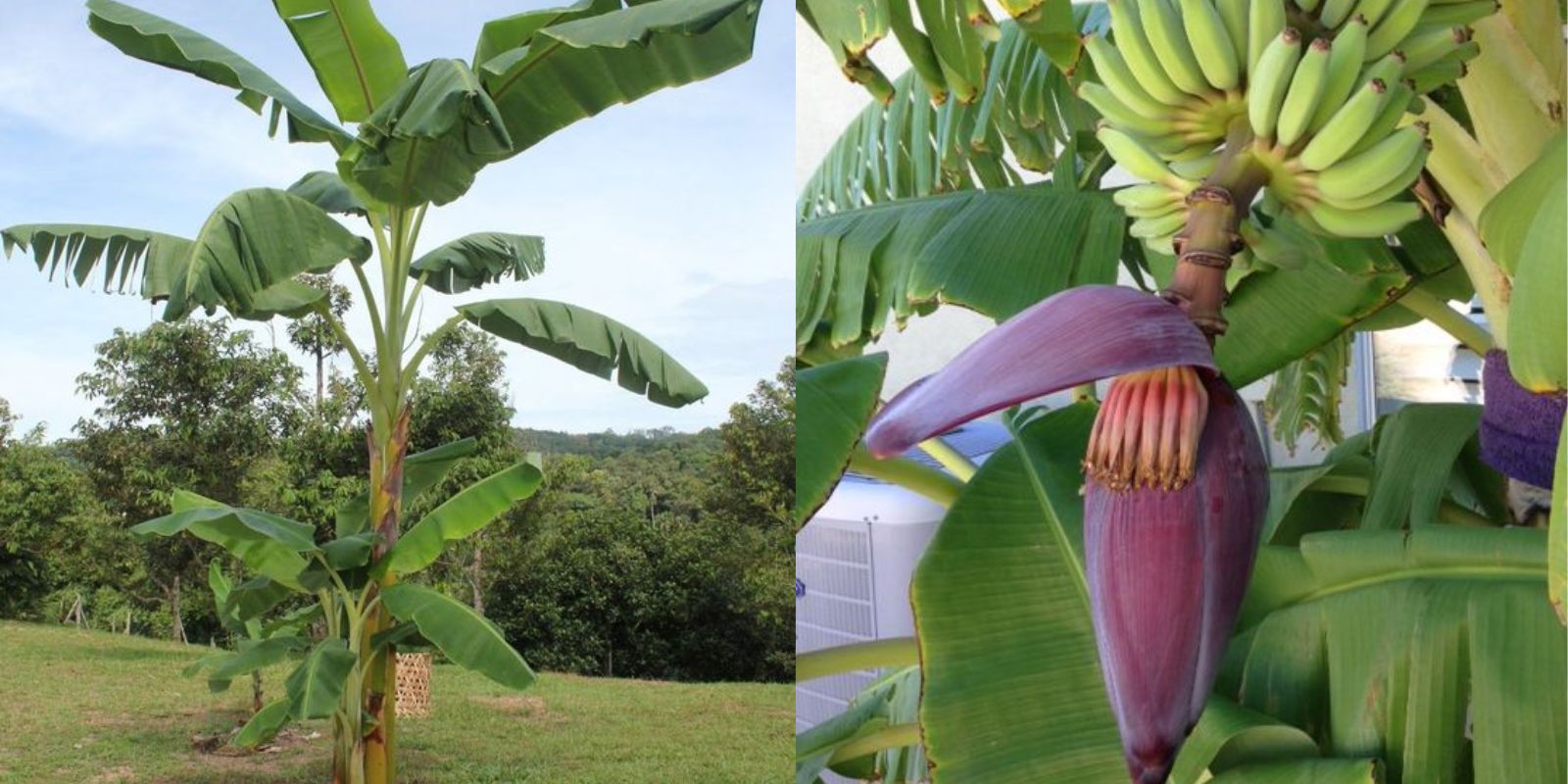Introduction
In the lush, verdant landscapes of Papua New Guinea, where the jungle’s symphony of life hums continuously, stands a natural wonder that defies expectations—the largest banana tree in the world. This towering botanical marvel is not just an impressive feat of nature but also a testament to the diverse and remarkable flora of our planet. With leaves stretching up to 2.5 meters and bananas that rival the size of newborns, this extraordinary plant embodies the immense potential of nature’s growth. Let’s delve into the captivating world of the giant banana tree and explore how it has become one of nature’s most fascinating spectacles.
Discovering the Giant Banana Tree
- A Glimpse into the Location Nestled in the heart of Papua New Guinea, the giant banana tree thrives in a region renowned for its incredible biodiversity and lush tropical rainforests. This area is characterized by its high rainfall, humid conditions, and rich soil, creating an ideal environment for a wide range of plant species, including the colossal banana tree. The tree’s presence in this vibrant ecosystem highlights the unique and varied plant life that Papua New Guinea has to offer.
- The Impressive Size of the Tree The giant banana tree is distinguished by its enormous leaves, which can grow up to an astonishing 2.5 meters in length. These large, green leaves not only contribute to the tree’s grandeur but also serve essential functions. They provide a substantial surface area for photosynthesis, enabling the tree to harness sunlight efficiently and support its impressive growth. The sheer size of the leaves also helps the tree to better capture rainwater, which is vital for its nourishment in the tropical environment.
- The Extraordinary Bananas Perhaps the most striking feature of the giant banana tree is its fruit. Unlike typical banana plants, which produce bananas of standard size, this tree yields bananas that are comparable in size to a newborn baby. These oversized bananas are a testament to the tree’s remarkable ability to produce fruit on an exceptional scale. The large size of the bananas can be attributed to the tree’s optimal growing conditions and its genetic potential for producing such enormous fruit.
- Growth Conditions and Environmental Factors To understand why this banana tree has achieved such impressive dimensions, it’s crucial to examine the growth conditions and environmental factors that play a role. The tropical climate of Papua New Guinea provides a consistent, warm temperature and high humidity, both of which are conducive to vigorous plant growth. Additionally, the rich, well-draining soil in the region supplies essential nutrients that support the tree’s development. The tree’s growth is also influenced by its surrounding ecosystem. In the dense rainforest, the tree benefits from the natural shelter and protection provided by other vegetation. This environment helps shield the tree from extreme weather conditions and pests, allowing it to thrive and reach its full potential.
The Ecological and Cultural Significance
- Ecological Impact The giant banana tree plays a significant role in its ecosystem. Its large leaves and fruit provide habitat and food for various wildlife species. Birds, insects, and other animals are drawn to the tree, benefiting from the shelter and nourishment it offers. Additionally, the tree contributes to the overall health of the rainforest by participating in the complex web of interactions that sustain the ecosystem.
- Cultural Importance In Papua New Guinea, bananas hold cultural and economic significance. They are a staple food source and are integral to many traditional practices and ceremonies. The giant banana tree, with its extraordinary fruit, further enhances the cultural value of bananas in the region. It symbolizes abundance and prosperity and is often celebrated in local folklore and customs.
Conservation and Future Prospects
- Preservation Efforts Preserving the giant banana tree and its habitat is crucial for maintaining the ecological balance of the region. Conservation efforts focus on protecting the rainforest and ensuring that the tree continues to thrive in its natural environment. This includes safeguarding against deforestation, managing land use, and supporting sustainable agricultural practices.
- Scientific Research The giant banana tree presents an exciting opportunity for scientific research. Studying this extraordinary plant can provide valuable insights into the factors that contribute to its impressive growth and fruit size. Researchers are exploring how the tree’s genetic makeup, environmental conditions, and cultivation practices interact to produce such remarkable results. This knowledge could have implications for improving agricultural practices and crop production worldwide.
Conclusion
The giant banana tree of Papua New Guinea stands as a testament to the awe-inspiring capabilities of nature. With its colossal leaves and oversized bananas, it captures the imagination and highlights the incredible diversity of the natural world. By understanding and appreciating this botanical marvel, we gain insight into the complex interactions that sustain our ecosystems and the potential for extraordinary growth within nature’s embrace. As we marvel at this natural wonder, we are reminded of the beauty and potential that exists in even the most unexpected places.

